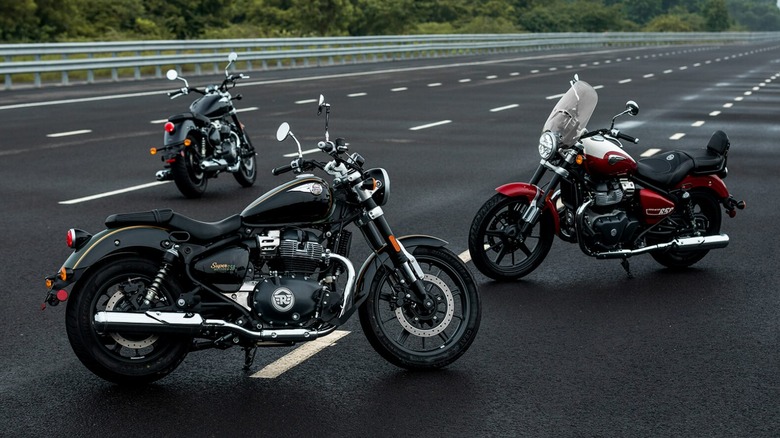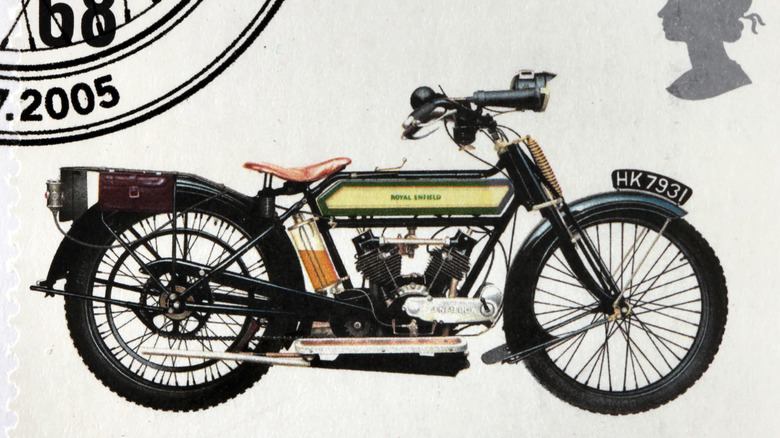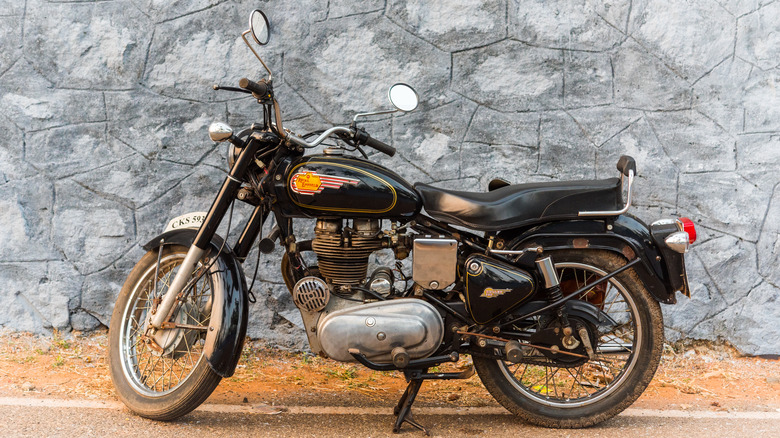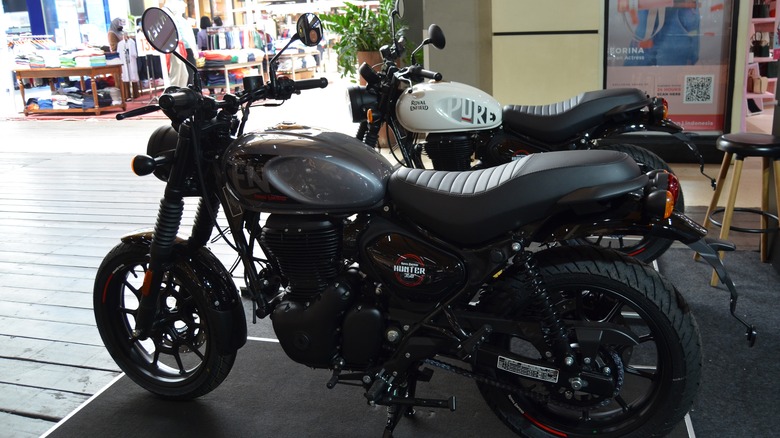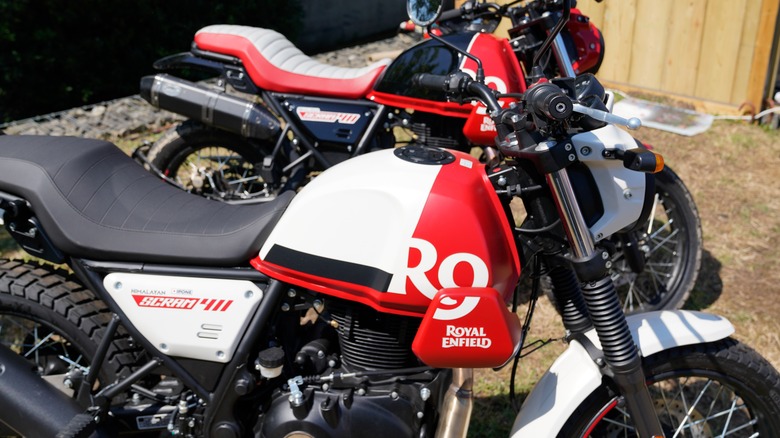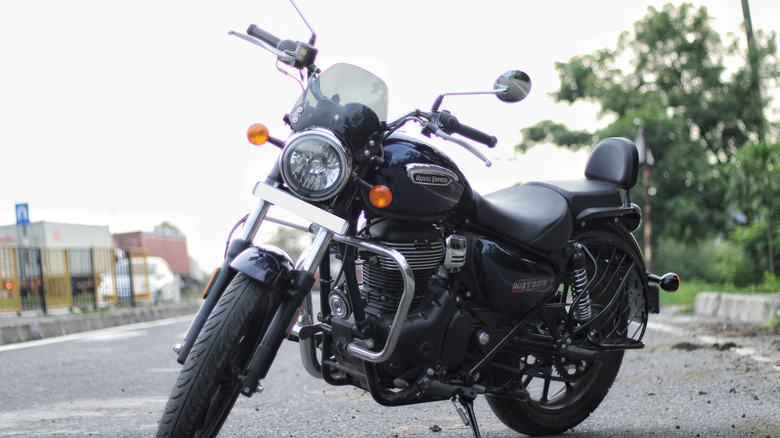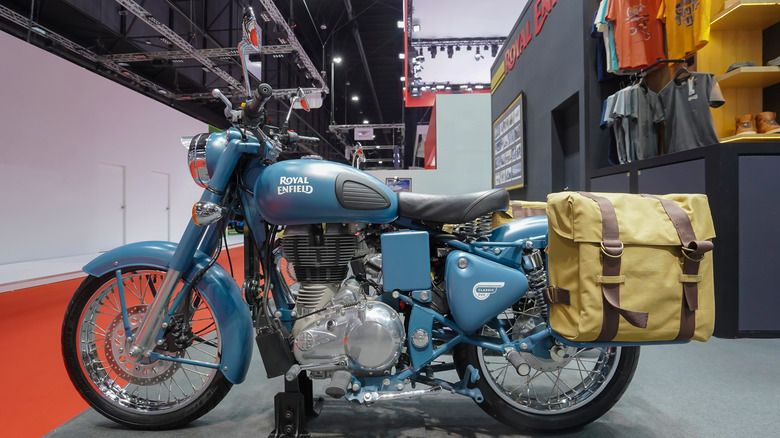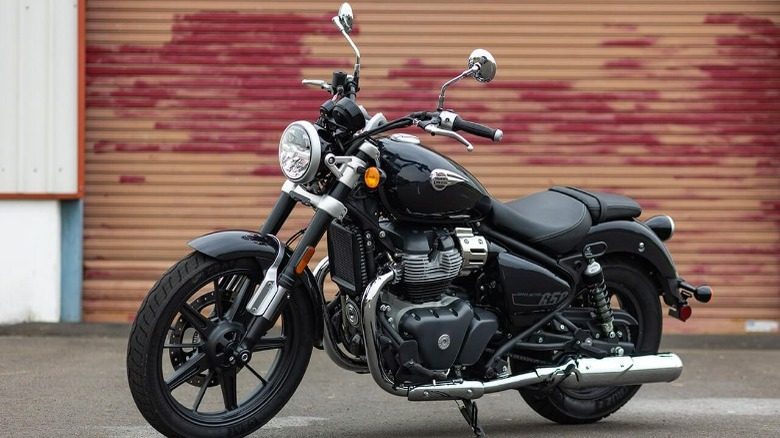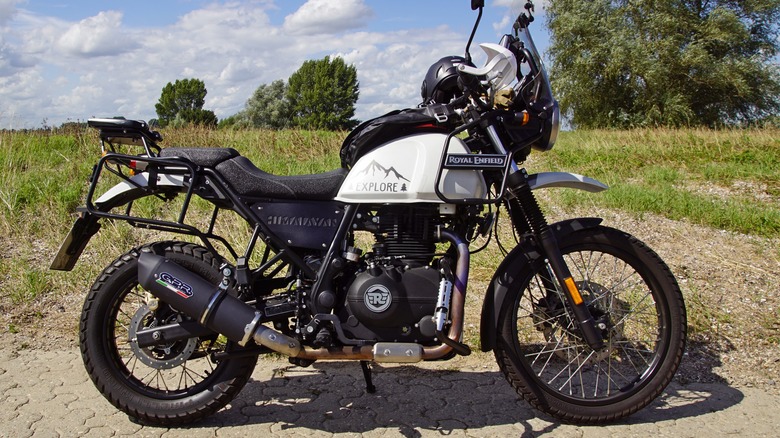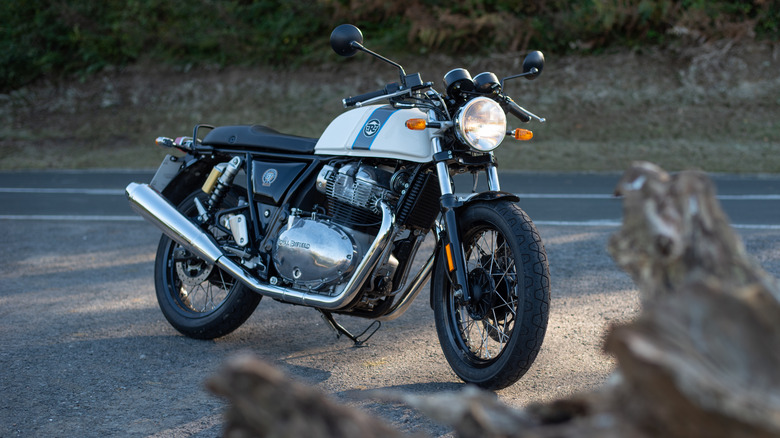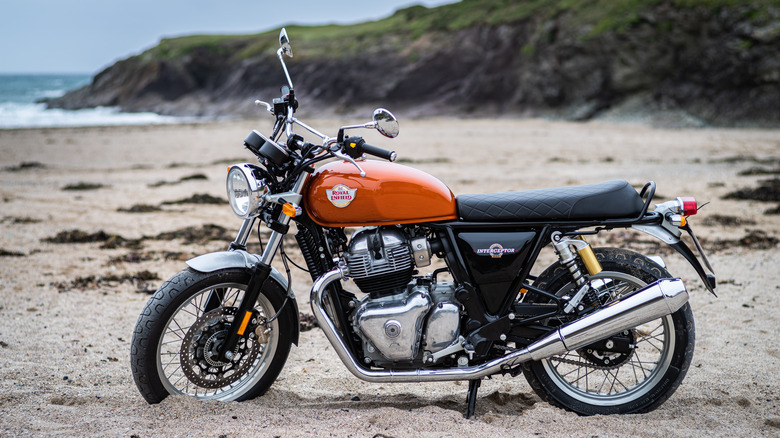The 10 Best Royal Enfield Motorcycles Ever Made
Royal Enfield, the world's oldest motorcycle brand, has been in production since 1901. During this time, it has undergone many changes in ownership, location, and product line, and since the turn of this century has reinvented itself as the leading manufacturer of affordable modern-classic machines, with such models as the Interceptor, Continental GT, and Himalayan leading the charge in their successful run of contemporary designs.
The early days of Royal Enfield saw it come to fruition while manufacturing motorcycles for the allies in the First World War. By the time the first "Bullet" model rolled off the production line in 1932, the company was well on its way to becoming one of the most successful motorcycle brands, helped by another run of military orders from 1939-1945. But a significant change occurred once Royal Enfield started creating motorcycles for the Indian market in Madras in the 1950s. By the late 1960s, the U.K. manufacturing plant had closed, and Enfield India has been the sole producer of R.E. motorcycles ever since.
Fast forward to the Royal Enfield of today, and business is thriving, with new models produced regularly and a growing base of enthusiasts worldwide. It has returned to its roots with a new U.K.-based technology center, which manages product strategy, innovation, and design. In contrast, a new production plant in Chennai has expanded the Indian operation. Here we take a look at the best motorcycles to have been created over the course of this quirky marque's long and illustrious history.
Royal Enfield Standard
Royal Enfield made firearms in its early days, with the Lee Enfield bolt-action rifle being the primary weapon used by the British army during the early 20th century. The brand still uses the slogan "Made Like a Gun" to describe its vehicles' strong and sturdy construction, and the Royal Enfield Standard was one of the earliest models to enjoy a long production run and help the brand achieve notoriety. Notable for its square tank and three-speed, stick-shifted transmission, this 1925 model displayed many features that would characterize motorcycles in the decades to follow, such as panniers, drum brakes, shock-absorbing front forks, and turn signals.
Like most motorcycles of its era, the performance specifications of the Royal Enfield Standard were modest, although it could at least compete with the horses that dominated the U.K. carriageways in the 1920s. It had a displacement of 350-cc and a 2.75-horsepower, air-cooled, two-stroke, single-cylinder engine, providing the familiar Royal Enfield "thump" that is still to be heard in many later models, such as the Bullet, the Classic, and the Himalayan.
As with any company that has stood the test of time, it is interesting to know how Royal Enfield came to be and how it endured. The earliest machines help us understand the company's roots and give us insight into its evolution, later with the 350-cc Bullet, followed by the Classic, eventually arriving at the popular 650-cc twins of today. All thanks to the brand's early success with trailblazers like the Royal Enfield Standard.
Royal Enfield Bullet 350
The year 1932 saw the introduction of the Royal Enfield Bullet 350, which claims the title of the longest continuous production of any motorcycle, as it is still being built today. Over the last decades, the Bullet has become so ubiquitous in India that it has become a national institution, but its success lies in its classic lines, simple construction, and rugged build quality, first devised in England between the two World Wars.
The Bullet 350 is a great all-around motorcycle. It is ideal for beginner riders as it is not overpowered at 21 horsepower, has a basic 4-speed transmission, and is easy to flat-foot at just 31.5 inches in height. It has a comfortable upright seating position and a wide saddle, with plenty of room for a pillion passenger. Early models had drum brakes at the front and rear, but recent editions have increased stopping power with a single front disc brake and even ABS as an option on some models. Its telescopic forks and rear swing arm, while now commonplace, were a relatively new creation when the bullet was first created, and it still handles well over uneven terrain, helped by its large 19-inch front wheel.
While later Royal Enfield models are undoubtedly more refined than the Bullet 350, they all trace their heritage back to this remarkable machine. It didn't set or break any records and, to this day, is modest as far as its specifications are concerned. However, it won the hearts of thousands of motorcyclists over the years and is both a utilitarian and fun bike that is as at home in the mountains of northern India as it is on the country lanes of rural England.
Royal Enfield Hunter 350
Royal Enfield has been busy in the 2020s, and hot on the heels of the successful Meteor 350 came the Royal Enfield Hunter 350. Similar to its predecessor, this street bike has plenty of modern accessories to tempt young riders but is a competent, well-performing machine that deserves to be taken seriously in its own right.
The Hunter 350 looks nimble, with a slim profile, short wheelbase, long, low saddle, and shortened exhaust. It would be perfect for either weaving through heavy traffic on a busy commute or burning through the "twisties" on tight country backroads. It is well-equipped, with both an analog speedometer and an LCD, which is compatible with the Enfield Tripper Navigation System and offers odometer, trip, and fuel level information. It has tubeless tires and 17-inch wheels, further accenting its sporty dynamics and excellent stopping power, thanks to front and rear disc brakes with dual-channel ABS. It even has a USB port for charging or powering your external devices, such as a phone or GPS.
Whether the Hunter 350 will be as well-loved as the Classic 350 or praised as highly as the Meteor 350 remains to be seen, but what this bike's existence confirms is that Royal Enfield wants to corner the market for affordable, light, small-engine-capacity motorcycles and with a traditional bike, a light cruiser, and now a street bike added to their ever-expanding portfolio, the Hunter 350 may represent the last piece of the puzzle.
Royal Enfield Scram 411
Royal Enfield has been working hard lately to expand its product line to appeal to a broader user base, and the Scram 411 is one such recent addition. Built on the same framework as the R.E. Himalayan, this go-anywhere bike has classic looks and off-road abilities similar to those of the Triumph Scrambler while being highly affordable, economical, and easy to ride. In profile, it is attractive, with good ground clearance, front and rear disc brakes, an upswept exhaust, high handlebars, and a commanding riding position.
The Scram 411 has the same tried-and-tested single-cylinder 411-cc engine as the Himalayan, delivering a conservative 24.3 horsepower and 32 Nm of torque. It has a 5-speed transmission, mono-shock rear suspension, long-travel front forks, and dual-channel anti-lock brakes. Despite its almost 8-inch ground clearance, it is just over 31 inches high in the saddle, making it an ideal off-roader for those of shorter stature.
Those looking for their first dual-sport motorcycle or anyone who is looking for a simple, easy-to-handle bike that won't break the bank might consider the Royal Enfield Scram 411. Whether you are a weekend day tripper, a daily commuter, or a die-hard adventure tourer, biking should ultimately be fun, and the Scram 411 certainly delivers. While it is undoubtedly niche as compared to most other Royal Enfield motorcycles, it fills a gap in the R.E catalog that needed filling.
Royal Enfield Meteor 350
The Royal Enfield Meteor 350 bridges the gap between the popular Classic 350 and more modern street bikes like Enfield's Thunderbird. While it is a recent addition to the brand's product line, it has since received high praise from owners and critics alike for providing excellent performance and a fun rider experience while staying true to its classic roots.
At a glance, the Meteor 350 looks like a capable but not-overly-inspiring light cruiser. It lacks the traditional lines of the Classic range, and the chrome of old makes way for plastic mudguards and painted panels, yet it looks highly practical and well put together. Its 20.2 horsepower engine is ideal for commuting, cruising in the countryside, and long-distance travel on more minor roads, but with a top speed of just over 70 miles per hour, it is not well suited to highway travel. Its limitations aside, a closer look at the Meteor 350 reveals several features and benefits that are rarely seen on a bike of this category and price point.
For example, it has front and rear disc brakes, with ABS as standard. It has onboard navigation powered by Google Maps with Enfield's uncomplicated and effective "Tripper" interface in the instrument panel. It has a six-step adjustable preload on its rear suspension for fine-tuning if you are traveling two-up or with luggage. It also has tubeless tires, which are far more practical than their innertube counterparts. When these features are coupled with a practical, affordable, responsive machine that handles well, is economical to run, and is a joy to ride, it's no wonder that the Meteor 350 has quickly become one of Royal Enfield's biggest sellers.
Royal Enfield Classic 500
In 2017, Royal Enfield re-released the Bullet 500 as the Classic 500, an updated version of their traditional bestseller for the new century. As a later relation of the Bullet, the classic 500 marries its classic lines with a split seating configuration and increased power while retaining most of its essential attributes, including the classic engine "thump" that Enfield fans have come to love.
From the front angle, it is hard to distinguish the Classic 500 from the Bullet 500, as it has much the same headlight configuration, with its inbuilt instrument panel. However, we see a very different machine when viewed from the side. The Classic has an independently sprung saddle with a wide seat, with an individual seat perched on the rear mudguard for a passenger. While this is not as convenient for the pillion, it is aesthetically pleasing and undoubtedly more comfortable for the driver. It also has an upwardly-raked exhaust and, perhaps most crucially, has its shifter and brake pedals reversed as compared to previous Bullets, which unconventionally had their Brake pedal on the left-hand side.
The Classic 500 has a 499-cc engine, giving it that extra edge to keep up with highway traffic and making overtaking much easier compared to its 350-cc little brother. It retains the same single-cylinder block with electronic fuel injection and five-speed transmission, as well as the 31.5-inch seat height and 19-inch front and rear wheels, which make handling a breeze. Royal Enfield has recently reissued the Classic 350 to much acclaim, with some added extras such as GPS and a digital instrument display, but the 500 gets our vote, as it boasts the same traditional good looks while packing more punch.
Royal Enfield Super Meteor 650
Royal Enfield is happy to repurpose the same engine for different models of bikes, and in the case of the Super Meteor 650, this is no bad thing. As a relatively new addition to the Enfield catalog, this midsize cruiser is a stylish and practical ride that won't break the bank, and it uses the same well-respected engine as the marque's Interceptor and Continental GT.
As the name suggests, Royal Enfield has taken their popular Meteor 350's style and beefed it up with a longer wheelbase, a six-speed gearbox, a 648-cc parallel-twin engine that delivers almost twice as much torque, and a relaxed riding position similar to that of other cruisers like the Kawasaki Vulcan 900. The result is a bike with forward foot pegs and high handlebars that is well-qualified to tackle long highway miles in comfort, with plenty of headroom for overtaking and good stopping ability, courtesy of its dual-channel anti-lock brakes.
Unlike other releases in Royal Enfield's product line, the Super Meteor 650 is available in several configurations. For example, the Grand Tourer kit includes an elongated windshield, dual touring seat, passenger backrest, and panniers. On the other hand, the Solo Tourer kit is slicker, with bar-end mirrors, luxury foot pegs, LED indicators, and machined wheels. The Super Meteor also comes in several colorways, meaning this versatile machine can be personalized straight out of the showroom.
Royal Enfield Himalayan 411
Royal Enfield motorcycles are like blank canvases that can be modified in all sorts of ways to suit all applications, and perhaps none is more customizable than the Himalayan 411. This bike helped reinvent Royal Enfield and bring the marque into the 21st century by offering riders a fun, affordable adventure bike that could perform in the rugged terrain of northern India.
Why was the Himalayan so successful? Unlike other bikes in its class, such as the BMW R1250 GS, Triumph Tiger 900, or Honda's Africa Twin, the Royal Enfield retails at just under $5,000. This made adventure biking accessible to the everyday rider who didn't necessarily wish to spend the price of a new family car on a motorcycle. You also get many extras as standard, including handguards, crash bars, and luggage racks, with the option to add top boxes, panniers, windshields, and engine guards, or switch handlebars, upgrade the suspension and make many other modifications to suit your requirements.
The Royal Enfield Himalayan 411 is also low in the saddle for an adventure bike at just 31.5 inches, so it appeals to shorter riders or those who prefer not to have their feet hovering a foot above the ground when riding off-road. While some may find it a little underpowered for highway riding at 25.4 horsepower, it delivers ample torque and sufficient speed for backroads and off-roading. In short, the Himalayan is exciting, capable, accessible, and an ideal entry-level bike for budding ADV riders.
Royal Enfield Continental GT 650
The café racer has been an institution among British bikers ever since the 1960s, and it makes perfect sense that a brand with its history so firmly rooted in the United Kingdom should produce one of these stripped-down, fairing-free motorcycles. With its timeless looks, aggressive riding position, clip-on handlebars, upswept exhausts, and single racing seat, the Continental GT 650 helped to redefine Royal Enfield as a brand to be taken seriously. It's not only a head-turner but also performs well as a recreational bike that is fun to navigate through twisties and satisfying to open up on the freeway.
The Continental GT 650 doesn't only look good in the paddock; it also looks good on paper, with an impressive spec sheet that leaves you itching to take one for a spin. Most important is the engine, a tried and tested parallel twin 646-cc block that creates a satisfying exhaust note that has proven reliable and efficient. Stopping power comes courtesy of front and rear disc brakes, with ABS as standard, and its six-speed gearbox has a slipper clutch to make shifting a breeze.
With the Continental GT, Royal Enfield has delivered an aspirational and affordable machine that has introduced a whole new generation of riders to the pleasures of riding a sports bike that handles easily and is not overpowered. In this respect, it is in a class of its own, and it comes in a variety of different colorways and is highly customizable. While it may not be well-suited to long-distance touring and daily commutes, the Royal Enfield Continental GT 650 is perfect for those who ride purely for fun.
Royal Enfield Interceptor 650
Sometimes a product is created that changes the way we look at a brand, and the Interceptor 650 certainly revolutionized the way Royal Enfield was perceived by critics and the motorcycle-buying public alike. This much-lauded classic touring bike has been a great success and is often compared to the highly-respected Triumph Bonneville in road tests, proof indeed that the Indian-owned marque has come a long way since its 21st-century revamp.
Unlike the Bonneville, the Royal Enfield Interceptor 650 is affordable, especially for new riders, starting at around $6,000 new, and for this, you get excellent value for money. Features-wise, the bike is very similar to the Continental GT; however, with its spacious touring seat, wide and elevated handlebars, forward foot pegs, and upright seating position, it is eminently practical compared to its sportier counterpart. So well-loved is the Interceptor 650 that it has inspired multiple competitors, most notably the BSA Goldstar (from another ex-British, Indian-owned brand).
The Royal Enfield Interceptor 650 is a reliable, economical motorcycle with excellent handling and a commanding road view that is comfortable over long distances and a joy to ride. It would be hard to find a more comprehensively-equipped motorcycle at this price, and it's no wonder it has been so well received within its relatively short lifespan. Royal Enfield's winning formula for British design and Indian construction has managed to deliver a motorcycle that suits almost all skill sets, riding styles, and road-going applications while sticking to their principles of high quality and excellent value.
